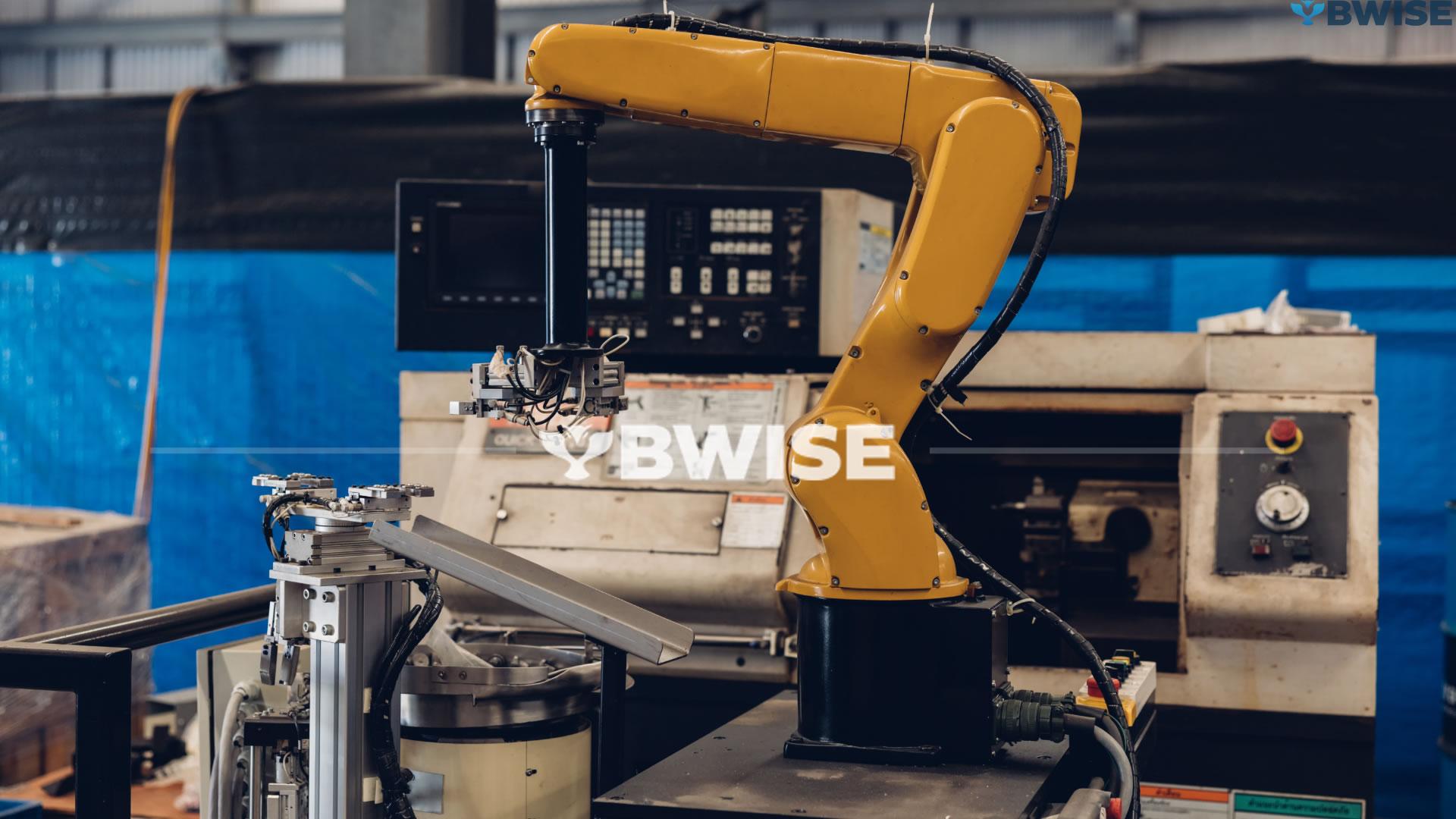In the ever-evolving manufacturing world, a new player is rewriting the rules: Manufacturing Resource Planning (MRP). This system reshapes production, smartly employing resources, and spurring business expansion. By exploring the cornerstone elements of MRP, firms can uncover innovative techniques to boost productivity, foster adaptability, and enhance profitability.

Key Takeaways
- Manufacturing resource planning (MRP) is a transformative system that streamlines production processes and optimizes resource allocation.
- MRP enables real-time adjustments for agility, enhances inventory management, and maximizes operational efficiency.
- Material requirements planning, supply chain optimization, and enterprise resource planning are integral components of the MRP approach.
- Lean manufacturing and just-in-time production are key strategies that complement the MRP framework.
- Embracing the future of manufacturing through MRP can drive productivity and profitability for businesses.
Unveiling the Power of Manufacturing Resource Planning
Manufacturing is a rapid world. Success comes from a smooth flow, and smart use of resources. The meaningful change here is the Manufacturing resource planning, or MRP. It smoothens production. Makes it efficient. MRP links all production aspects, from gathering materials to managing stock to planning schedules. It helps manufacturers adapt speedily to market shifts and reduce waste.
Streamlining Production Processes
MRP excels at aligning resources with the plan of production. It ensures the essential materials are available right on time, reducing wait time and enhancing the flow of work. Advanced algorithms are its tool. They examine production specifics, assisting makers to make wise decisions and boost their productivity.
Optimizing Resource Allocation
In production circles, MRP shines in routing resources correctly and timely. It offers a clear snapshot of current inventory, equipment usage, and available workforce. This assists manufacturers in smartly leveraging their resources to achieve targets.
Incorporating resource planning into manufacturing introduces fresh potentials. It streamlines production and optimizes resource utilization. Consequently, manufacturers sustain a quick, flexible stance, centered on crafting top-notch products, desired by their clientele.

The Evolution of Production Scheduling
With the rise of manufacturing resource planning (MRP) systems, production scheduling has massively evolved. It is instrumental in ensuring all necessary resources are available precisely when and in the quantity required. Thanks to MRP, swift alterations to production schedules can be done to tackle unexpected hindrances, like faulty machinery or supply chain complications.
Real-Time Adjustments for Agility
Being able to quickly change production schedules is crucial in today’s fast-changing market. MRP uses advanced algorithms and data analytics to watch production and spot problems early. This quick response helps manufacturers meet customer needs and stay competitive.
By linking production scheduling with other MRP parts like inventory and capacity planning, companies can make their whole operation better. This approach helps streamline production, improve how resources are used, and boost profits.
The way production scheduling has changed in MRP systems is huge for manufacturing. Now, manufacturers can quickly adjust and use resources better. This lets them keep up with market changes, staying competitive in a fast-moving world.
Mastering Inventory Management
Good inventory handling is vital for a manufacturing business to thrive. Good news is, MRP systems excel in this department. They merge sales predictions, how much to produce, and supplier schedules to keep stock levels spot on. It wards off the danger of stock shortages or overloads, resulting in cost savings.
MRP excels as it provides a transparent, current view of the inventory. This aids those planning production in making wise decisions. Ensuring they have appropriate resources at the necessary times becomes a breeze. MRP monitors all aspects, from base materials to final products, assisting in maintaining optimal inventory levels.
MRP plays nice with crucial manufacturing bits, such as predicting demand and getting supplies. It ensures info cruises without bumps all over the business. It prompts a forecast of wants and fine-tunes the store items to dodge having excess or scant stock. Collaborating with all parts of manufacturing, MRP aids companies in aligning their supplies with the needs. This paves their path towards efficiency and profits.
MRP becomes increasingly important with shifts in production. This technology enables businesses to enhance their inventory management, improving customer service and keeping their edge in manufacturing.
Capacity Planning: Maximizing Operational Efficiency
Preparation for future needs is essential to ensure firms can fulfill their manufacturing demands. It assists in determining potential output to meet anticipated customer requests. Forward-thinking and strategic planning enable businesses to choose suitable machinery, workforce, and timings, leading to streamlined processes.
Forecasting Demand and Capacity Needs
Good capacity planning revolves around aligning demand and capacity just the right. Using previous data, patterns, and market knowledge, MRP forecasts future needs. This lets companies plot out their production and smartly utilize their resources. It aids in preventing an over or under-production, ensuring smooth running and readiness to cater to customers.
Good business planning allows for easy adaptation to shifting demands. This adaptability brings more smiles to customers’ faces and boosts profits by optimizing resources and minimizing waste.

Material Requirements Planning: The Backbone of Lean Manufacturing
Nowadays, in the arena of creation, the planning of material requirements (MRP) is crucial for sleek operations. It aids in confirming producers have accurate materials, pieces, and elements. This method reduces surplus stock and streamlines the supply chain.
Manufacturing resource planning, or MRP, systems offer a complete picture of a company’s production. They follow sales predictions, stock levels, and preparation times. These factors assist in formulating strategies for procuring supplies and arranging manufacturing times. All of which is critical for streamlined manufacturing, a process that strives to eliminate surplus and enhance customer value.
Material requirements planning helps manufacturers run their operations seamlessly. It aids in reducing waiting times and prepares them for shifts in the market. MRP allows for accurate material need forecasts at each stage of production. Thus, it enables Just-in-Time (JIT) production, ensuring materials show up precisely when required, dodging surplus stock.
The merging of MRP and lean manufacturing processes has revolutionized many businesses. It aligns the creation of goods with customer desires. This method reduces excess, enhances productivity, and improves product quality while lowering costs. It ensures businesses maximize profit and maintain market competitiveness.
Supply Chain Optimization: Connecting the Dots
In our modern, speedy production environment, fine-tuning the supply chain is crucial for maximizing output. Manufacturing resource planning (MRP) is a gadget. It enhances teamwork and sight lines throughout the supply chain.
Enhancing Collaboration and Visibility
MRP is crucial for optimizing supply chains by linking data from suppliers, customers, and internal operations. It gives businesses a complete view of the supply chain. This helps them make better decisions, reduce risks, and improve the flow of materials and information.
The MRP system makes team collaboration a breeze. Information is readily available, promoting quicker decisions. Demand forecasts improve for suppliers, while customers receive immediate updates on orders and delivery schedules. Identifying and solving issues becomes easier thanks to this transparency and interaction, ensuring a smooth-running supply chain.
MRP systems give us deep information. We can use this to predict what will happen next. Businesses can then tweak their production. They can also modify what they have in store. They can do all this in advance. This helps them change their supply chain strategies based on data. This way, companies can stay quick and flexible. They can remain competitive in a market that is constantly evolving.
MRP lets manufacturers ramp up their supply chain. It boosts efficiency and cuts costs. Customers love this. It also improves their spot in the market.
Enterprise Resource Planning: The Integrated Solution
ERP (Enterprise Resource Planning), or enterprise resource planning, is more than just overseeing production. It is about uniting financial matters, employee affairs, and customer interaction. Paired with MRP, or manufacturing resource planning, it forms a seamless, streamlined process for operating a business. This method elevates functionality and revenue for the entire organization.
ERP systems unify separate sectors and processes. Providing a central hub for essential business info and duties, they fine-tune resource allocation, inventory oversight, and supply chain performance for manufacturers. They’re crucial in the swift and competitive landscape of contemporary manufacturing.
ERP provides a real-time comprehensive outlook on the whole manufacturing journey. Smooth data flow between departments aids in quicker decision making for managers. This swift reaction is key to keeping up with competition and adapting to market shifts.
Using ERP with MRP helps companies use technology to make operations smoother, cheaper, and more sustainable. This combination optimizes processes, boosts productivity, and improves the quality of products and services for customers.
Manufacturing Resource Planning: Driving Productivity and Profitability
Nowadays, in the hustling world of manufacturing, adopting manufacturing resource planning (MRP) is a huge leap ahead. It enhances efficiency and income by best using resources and refining production methods. MRP also clarifies the supply chain, reducing expenses, boosting production, and rapidly adjusting to market shifts.
MRP’s strength comes from bringing together sales, inventory, and production data. This gives a full picture of what is happening in manufacturing. It helps companies make smart choices that boost efficiency and profits. By looking closely at how things work, MRP spots waste, uses resources better, and boosts productivity.
MRP provides instant data and innovative analytics. This allows producers to foresee and address market demands rapidly. Achieving this results in quicker order fulfillment, content customers, and increased transactions. MRP aligns the manufacturing process with consumer desires, reducing surplus stock, shrinking storage expenses, and enhancing monetary circulation. In turn, these contribute to beefed-up earnings.
MRP’s advantages are not just for the factory. It makes working with the supply chain smoother. It encourages better communication and transparency, helping manufacturers work better with suppliers. This leads to shorter wait times, fewer supply chain problems, and a more efficient and cost-effective chain.
As the manufacturing world keeps changing, using MRP is now key to success. By using MRP, companies can increase productivity, boost profits, and stay ahead in the competitive manufacturing world.
Lean Manufacturing: Eliminating Waste, Enhancing Value
Lean production is at the core of modern manufacturing. It aims to cut waste and increase value. This method works hand in hand with manufacturing resource planning (MRP). Together, they boost efficiency and productivity.
Just-in-Time Production: A Game-Changer
Lean manufacturing includes just-in-time (JIT) production. This method matches material supply with the exact needs of production. It cuts down on inventory, saving storage costs and freeing up space.
With MRP, JIT production changes the game. It lets manufacturers quickly adapt to market changes. Real-time data and analytics help predict production needs, making sure materials are ready when needed.
The mix of lean manufacturing, JIT production, and MRP is a strong combo. It leads to ongoing improvement and better efficiency. Companies can make their processes smoother, reduce waste, and deliver products on time. This gives them an edge in today’s fast business world.
By adopting lean manufacturing and using MRP, companies can change their operations for the better. They can manage resources better, improve inventory, and increase profits. This approach to planning and controlling production is the future of making things. It helps businesses succeed in a changing market.
Conclusion: Embracing the Future of Manufacturing
The manufacturing world is always changing, making manufacturing resource planning (MRP) key for businesses to stay ahead. MRP helps streamline production, manage resources better, and make supply chains clearer. This lets manufacturers meet new market needs, work more efficiently, and grow over time.
Using MRP, companies can boost productivity and profits. MRP systems help make quick changes, manage inventory well, and plan. These are crucial in today’s fast-moving market.
The future of making things depends on using MRP well. By tapping into MRP’s power, companies can lead the way and offer immense value to customers. It is time for businesses to step into the future of manufacturing.
